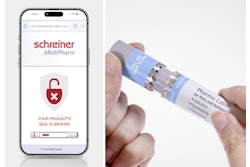Quick hits:
- Sustainability means different things to different people—it can be packaging materials, water/energy usage, and more.
- The financial sector has embraced more climate-friendly companies and policies.
- You don’t have to reinvent the wheel because trusted associations, peers, and suppliers are collaborating for success with guidance documents, meetings, and more.
- While per-unit costs may be higher for more sustainable transport packaging, it’s easier to pitch to your organization if you can improve performance in your shipping lanes, reduce product loss, and cut associated costs.
Related to this episode:
- Climate Change Interest Isn’t Ideology, It’s Economics
- Q&A: Non-Profit Launches Sustainable Procurement Guide in Healthcare
- ISTA Pharma Committee: New Passive Thermal Packaging Guidance Document
- It's essential to provide resources to the next generation of rising leaders in the packaging and automation industry. PMMI's Emerging Leadership Network provides networking events, awards programs, and professional development opportunities. Find out more by visiting their website.
 | Read the transcript below: |
Hello, I’m Keren Sookne for Take Five video with Healthcare Packaging. Today, we’re talking six reasons why it’s easier to choose more sustainable options in temperature-controlled logistics than it was just a few years ago.
There are so many reasons to make more environmentally friendly choices beyond personal goals: Company goals to be seen as a leader, concerns over future regulations, or you merely don’t want to be left behind because this is the way the industry is moving, especially as everyone sets their sights on Net Zero by 2050.
Before I get started, sustainability means different things to different people. There are so many ways to measure it: there are goals around energy and water use, cutting carbon emissions, switching to renewable energies, material choices, and more. For health systems, they may look at cutting the use of certain gasses in favor of more environmentally friendly ones. Meanwhile, some manufacturers look at electric vehicles for local sample transport or they measure compressed air usage in the plant and make cuts based on those measurements.
But let’s talk about switching to reusable or greener single-use transport packaging, including shippers, data loggers, totes, tubs, and phase change materials.
1. Reason #1 why it’s easier now to make the switch: The financial sector is onboard.
Making sustainable choices is no longer just for the “green set” or people from California or Colorado. Investors are increasingly looking at ESG Ratings, which are designed to measure a company's resilience to long-term, industry-specific environmental, social and governance (ESG) risks.
In the Reusable Packaging Association’s article, Climate Change Interest Isn’t Ideology, It’s Economics, they highlighted a peer-reviewed article where researchers found that in a survey of 439 investment professionals… only 7% of institutional investors said they had done nothing to manage climate risks in the last five years. Sustainable initiatives are everywhere, including in the financial sector.
2. More and more, we’re seeing guidance from end users on selecting products from manufacturers who are making sustainable choices.
There’s Kaiser’s Environmentally Preferable Purchasing (EPP) Initiative and Practice Greenhealth launched its sustainable procurement guide for health systems last year. This means that those who are making sustainable choices can be seen as having a competitive advantage for purchasing decisions, because this is what end users are being guided toward.
3. There are trusted industry associations leading the charge to help: The Reusable Packaging Association covers an array of topics and industries, with the goal of boosting reusable transport packaging.
ISTA’s Pharma Committee is a collaborative group of folks (both suppliers and end users) working together on industry standardization for reusables in temperature-controlled life science products.
They produce practical guidance documents to help you implement reusable packaging, specific to the unique needs and challenges of healthcare products.
4. The 4th reason on our list: COVID-19 highlighted this past year that some components may run low in the supply chain, particularly if sourced internationally.
People have experienced longer lead times for resin and packaging components. Using reusables may help with maintaining your own inventory so you’re not relying on market fluctuations.
5. A brief #5 filed under surprising but true: 52% of biopharma cold chain leaders surveyed by Peli BioThermal indicated that they were audited for sustainability by vendors supplying their organizations.
Every year, people are more adept at spotting greenwashing claims. It’s not enough to make claims, you have to walk the walk and your partners are looking! A Takeda expert noted that it might become a must soon if you want to be able to do business in certain markets or countries.
6. The technologies have come so far.
While per unit cost may be higher for more sustainable transport packaging, it’s easier to pitch to your organization if you can improve performance in your shipping lanes and reduce product damage, packaging waste, and their (major) associated costs.
If you only take away one point from this video, it’s that you don’t have to completely reinvent the wheel. Lean on suppliers, industry peers, and orgs like ISTA and the RPA to make choices. There are success stories already out there.
If you’re looking to see technology or collaborate in person, I suggest a visit to PACK EXPO Las Vegas and Healthcare Packaging EXPO on Sep 27-29. There’s even a reusable packaging pavilion with exhibitors and a learning center that hosts panels and presentations.





















